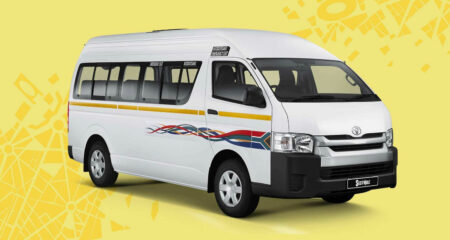
In five years, there will be more than 930m mobile subscribers in sub-Saharan Africa. As mobile coverage across the region expands, the opportunities for better logistics management are vast.
“There is a huge focus on mobility in transportation fleets in Africa,” says MiX Telematics director Steven Sutherland.
Drivers can use their smartphones to log orders, sign off deliveries and even manage timesheets. And the technology gives businesses a way to know where their vehicles are and were as well as their current status.
Because of the vast distances travelled, running efficient fleets is becoming crucial to doing business on the continent, says Sutherland. Companies are trying to reduce unnecessary kilometres travelled to alleviate high fuel costs and cut vehicle maintenance expenses.
South Africa’s road fleet is growing rapidly because of a lack of decent rail infrastructure. The National Association of Automobile Manufacturers of South Africa has reported sales in excess of a thousand units per month for extra-heavy commercial vehicles in recent months. There’s been good growth in the sale of smaller commercial vehicles, too.
Road transport ensures goods can be picked up at the point of manufacture and delivered to the point of sale, often overnight, says Sutherland. With rail, there are a lot more logistics involved.
Onboard computers that MiX fits to fleets under its management calculate the most efficient routes. Its technology can also test driver performance and alertness using a smartphone app and vehicle analytics.
MiX Telematics acquired a small South African tech start-up, Mobitech, earlier this year. Using its mobile software expertise, the company is now able to better monitor driver behaviour and provide companies with the ability to test drivers’ alertness before they drive. The Mobitech app includes other features that allow drivers to include electronic proof of delivery and to adhere to defined work processes such as pre- and post-trip inspections.
“These technologies are allowing us to take a look at current behaviour but more importantly we are also able to start looking at predicted behaviour.” Sutherland says the importance is to centralise the data that sits behind these analytics. “Fleet systems generate more data than financial systems. You are collecting positions every few seconds as well as other data relating to the vehicle and the driver.”
The impact of driver behaviour is paramount to businesses that manage a number of commercial vehicles. “Tyres on a large vehicle can take up as much as 17% of the costs to run that vehicle. These costs need to be managed, but it’s also about being able to integrate the data generated and combining it with financial data.”
This, says Sutherland, allows companies to ask why there are cost spikes with certain drivers or on certain routes.
Mobile has made it easier to get this data. Before, companies operating elsewhere in Africa needed to have satellite tracking systems. But the maturity of telecoms networks means drivers can go just about anywhere along major routes and remain in contact. — © 2014 NewsCentral Media




